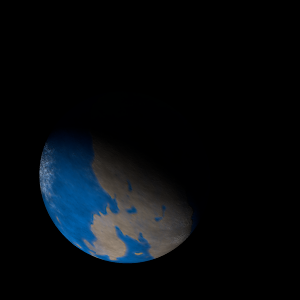|
|
Space Astro
|
Info for exoplanet "Moscu-me"
| Scientific (actual) data |
|---|
| Name | Kepler-896 b |
| Planet status | Confirmed |
| Radius | 0.226 |
| Orbital period | 144.547 |
| Discovered | 2016 |
| Updated | 2021-02-05 |
| Tconj | 2455100 |
| Publication | Announced on a website |
| Detection type | Primary Transit |
| Alternate names | 2MASS J18494540+4344041 b, K01581.02, KIC 7939330 b, KOI-1581 b, KOI-1581.02, WISE J184945.39+434404.0 b |
| Star name | Kepler-896 |
| Right ascension | 282.44° |
| Declination | 43.73° |
| Mag j | 14.164 |
| Mag h | 13.682 |
| Mag k | 13.659 |
| Star distance | 2334.93 |
| Star metallicity | 0.17 |
| Star mass | 0.92 |
| Star radius | 2.043 |
| Star sp type | G8IV |
| Star age | 5.01 |
| Star temperature | 5328 |
| Star alternate names | WISE J184945.39+434404.0, KOI-1581, KIC 7939330, 2MASS J18494540+4344041 |
| Wikipedia article | Kepler-896 b |
Back
| |
| Fictional info (?) |
|---|
| Suggested name | Moscu-me |
| Planet type | Cold planet |
| Because of its rapid rotation, the planet's shape is that of an oblate spheroid (it has a slight but noticeable bulge around the equator). |
| Atmosphere | Ethane | 99% |
| Atmospheric pressure | 14 bar |
 |
| Moon | Surrosa-koengir | Huge potato shaped oceanic moon |
| Google search for Moscu-me |
|
Website by Joachim Michaelis
|
|
|
|